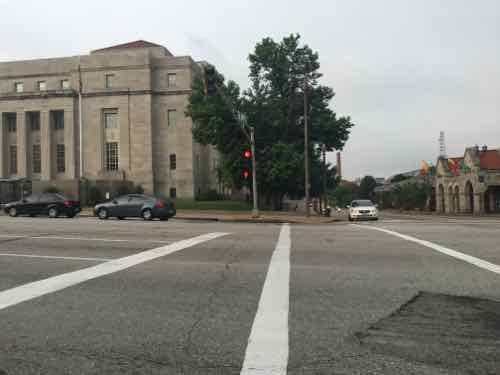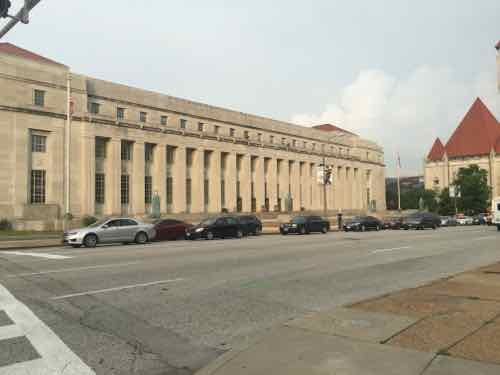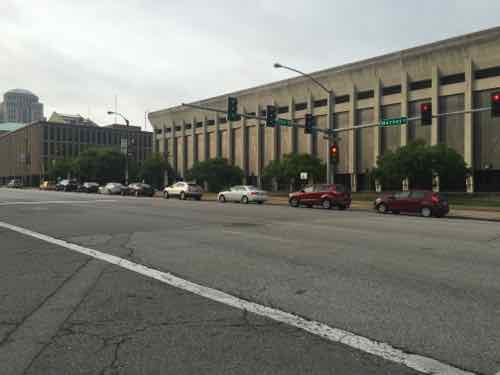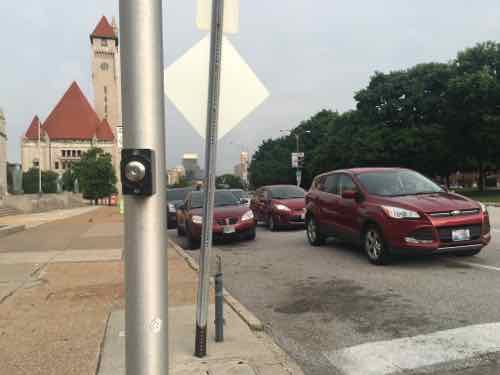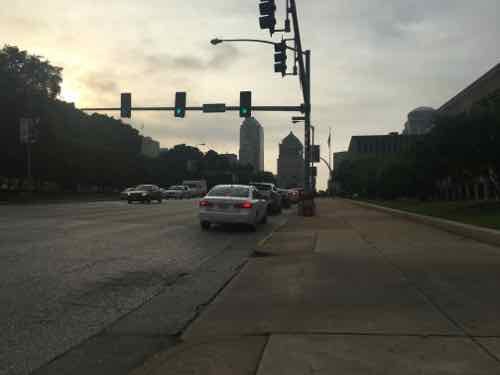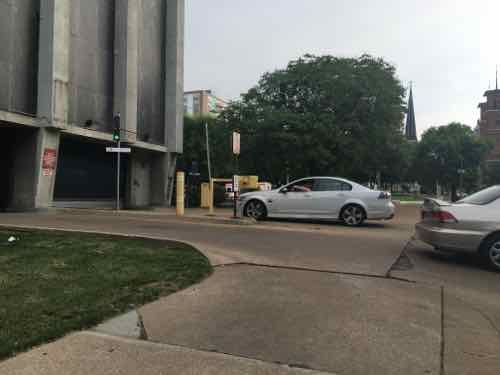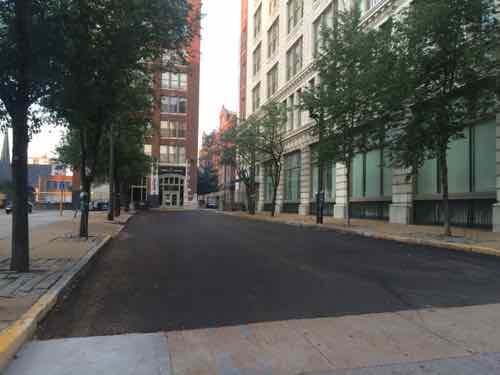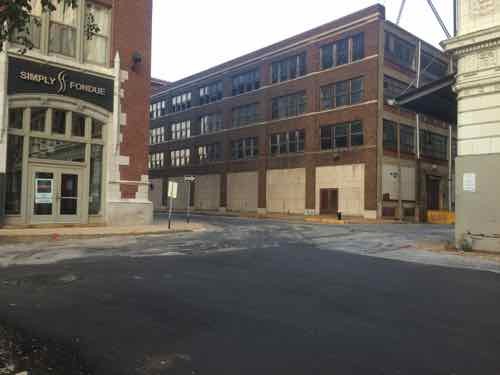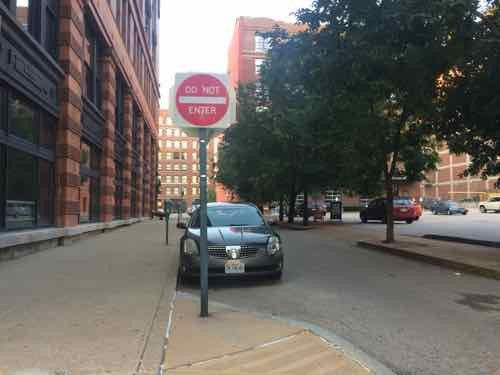Gaslight Square vs. Washington Ave
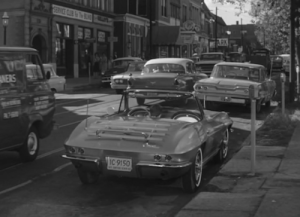
When I moved from Oklahoma City to St. Louis in 1990 our long-time neighbor across the street told me of his visits to Gaslight Square in the 1960s. By the time I’d arrived the buildings on the 2-block stretch of Olive were boarded up. I settled just West of there, on Lindell near Euclid. Euclid Ave, in the 90s, seemed to attract crime. Now it’s the greater downtown area — specifically Washington Ave.
First, a look at Gaslight Square:
By summer 1960, it was the place to be for beats, preppies, well-dressed adults, street troubadours and tourists. Olive pulsed with a happy cacophony wafting from places called the Crystal Palace, Left Bank, Laughing Buddha, and Dark Side. Jack Carl dished pastrami and genial abuse at 2 Cents Plain. A row of columns outside Smokey Joe’s Grecian Terrace anchored the landscape.
On March 24, 1961, the St. Louis Board of Aldermen anointed the obvious by renaming two blocks of Olive as Gaslight Square. Laclede Gas Co. later installed 121 gas streetlights, adding flicker to the buzz.
By summer 1961, Gaslight was noisier with more restaurants, taverns, nightclubs and shops. Some of the antiques dealers were squeezed out by rising rents. “The old gang doesn’t come around anymore, but perhaps it is a necessary evil of growing,” Massucci said as cash registers jingled.
Big and future names in show biz played the square. An 18-year-old singer named Barbra Streisand was warm-up for the Smothers Brothers. Allen Ginsberg recited poetry to mellow jazz. Miles Davis and Singleton Palmer were regulars. Earnest ministers opened the Exit, a coffee shop promising meaningful discussion and “jazz liturgy.”
But the crowds also attracted purse snatchers, car thieves and worse. On Dec. 30, 1964, Lillian Heller was fatally shot in a robbery in the vestibule of her apartment building at 4254 Gaslight, just east of Boyle. Heller, 61, and her husband, John, were artists.
Police added patrols and promised security. Young people flocked to discotheques such as Whisky a Go-Go, where hired dancers gyrated on platforms. But throbbing recorded music was drowning the live clarinet riffs. It became too crass and too much.
The old clubs began closing. Laclede doused some of the gas lights in 1967 for failure to pay. Police made drug arrests and thwarted a desperate bid to save the strip with topless waitresses. The Exit gave up the spirit in 1969, about when cultural pathologists pronounced the end of Gaslight. (Post-Dispatch)
Gaslight Square concentrated a lot into a couple of blocks of Olive. This concentration of money and activity attracted those who wanted some of that money. Rising crime became too much for some so it began to die.
There are parallels to current events, but there’s time to avoid going down the same path. Ever since the Washington Ave streetscape was completed about 15 years ago (Tucker to 18th), so much attention has been focused on a tiny area.
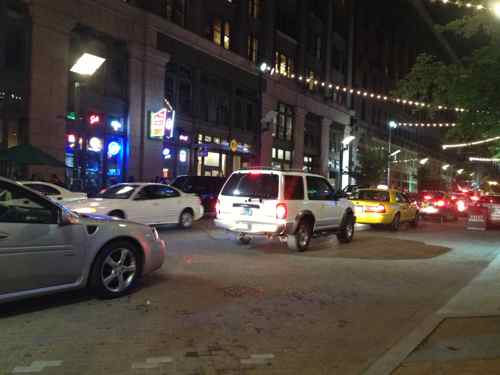
The solution is to put less focus on Washington Ave, but also do like many cities: divide downtown/downtown west into geographic districts. Examples: Toronto, Oklahoma City, Kansas City. This has been talked about for years but it has never happened.
Some possible districts include:
- Garment District
- City Museum District
- Ballpark Village District
- Convention District
- Union Station District
- Columbus Square District
- Library District
- Central Business District
- Arch District
- MX District
None should have “downtown” or Washington Ave” the name. Sure, crime will still happen, but this way an entire area won’t get stigmatized by something that happens 1-2 miles away. Branding districts could help with marketing efforts.
— Steve Patterson
